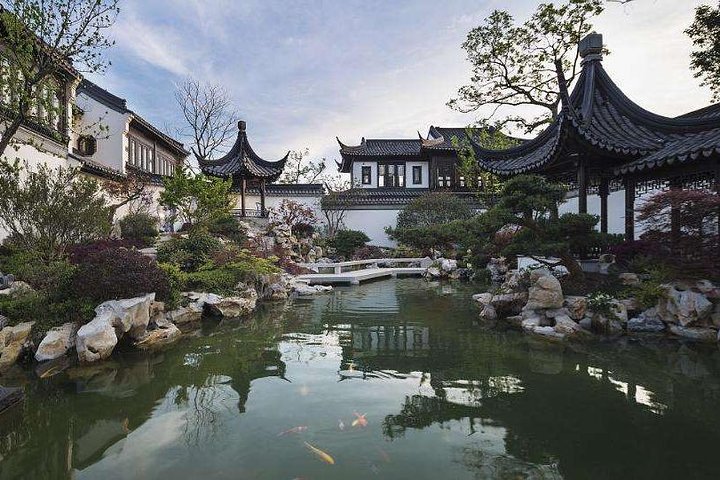Exploring Suzhou: A Cultural Tapestry of Gardens, Streets, and Temples
Eager to explore the cultural heart of Suzhou, I embarked on a journey through its gardens, streets, and temples, discovering the elegance and ingenuity of this ancient city.
A Journey Through Time: The Master-of-Nets Garden
As I stepped into the Master-of-Nets Garden, I was immediately enveloped by a sense of tranquility and timelessness. This garden, though not the most famous in Suzhou, is a hidden gem that offers a glimpse into the intricate artistry of Chinese garden design. The garden’s layout is a masterful blend of architecture, water, and plant life, creating a harmonious balance that is both soothing and inspiring.
Walking through the garden, I was struck by the attention to detail in every corner. The rock formations, carefully placed to mimic natural landscapes, and the delicate pavilions, each with its own unique character, spoke to the ingenuity and elegance of the Wu culture. The quietude of the garden allowed me to reflect on the rich history of Suzhou and the cultural significance of these spaces in Chinese society.
The Master-of-Nets Garden is a testament to the refined and delicate nature of Suzhou’s cultural heritage. It is a place where one can lose themselves in the beauty of nature and the artistry of human creation, a perfect start to my cultural exploration of this ancient city.
The Vibrant Pulse of Pingjiang Road
Leaving the serene confines of the garden, I ventured onto Pingjiang Road, a bustling canal street that runs through the heart of old Suzhou. The contrast between the quiet garden and the lively street was striking, yet both shared a common thread of cultural richness and historical depth.
Pingjiang Road is a tapestry of old and new, where traditional tea houses and modern cafes coexist, and the echoes of the past mingle with the vibrant energy of the present. As I strolled along the cobblestone path, I was captivated by the fusion of elements that define this street. The aroma of freshly brewed tea wafted through the air, and the sound of traditional Chinese music played softly in the background, creating an atmosphere that was both nostalgic and invigorating.
This street is a living testament to the enduring spirit of Suzhou, where the past is cherished and the present is embraced. It is a place where one can experience the essence of Suzhou’s cultural identity, a blend of elegance and innovation that has defined this city for centuries.
The Majestic Presence of Tiger Hill
My journey culminated at Tiger Hill, a historic site that has drawn scholars, poets, and monks for generations. As I ascended the hill, I was greeted by the sight of the iconic leaning pagoda, a symbol of Suzhou’s rich history and architectural prowess.
Tiger Hill is more than just a scenic spot; it is a place of spiritual and cultural significance. The hill is dotted with ancient temples and stone inscriptions, each telling a story of the people who have walked these paths before. The air was filled with a sense of reverence and contemplation, inviting visitors to pause and reflect on the legacy of this ancient city.
Standing atop Tiger Hill, I felt a profound connection to the past, a reminder of the enduring cultural heritage that defines Suzhou. This site, with its majestic views and historical depth, was a fitting conclusion to my cultural tour, leaving me with a deeper appreciation for the elegance and ingenuity of Suzhou’s cultural landscape.
In Suzhou, I found a city that is a living museum of history and culture, where every garden, street, and temple tells a story of the past and offers a glimpse into the soul of this remarkable place. Suzhou Cultural Tour








































